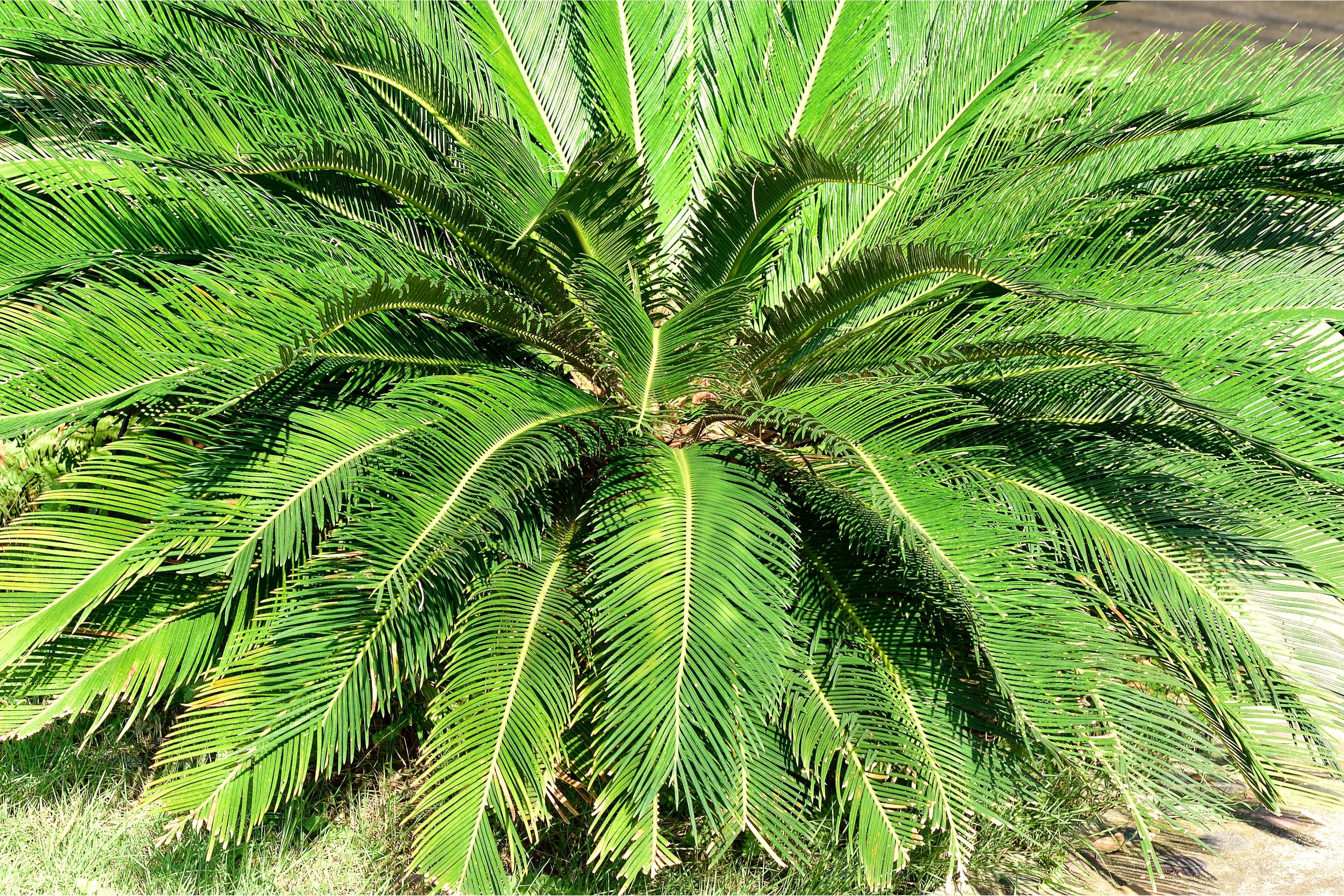Encephalartos ngoyanus
(Encephalartos ngoyanus)

Description
Encephalartos ngoyanus is a species of cycad in Ngoye Forest, in KwaZulu-Natal, South Africa. The stem is 30 cm high for a diameter of 15–20 cm. The leaves are 50 to 150 cm long, dark green in color, with leaflets that branch off opposite to an angle of 180° from the rachis and that are reduced to thorns towards the base of the leaf. It is a dioecious species, with yellow, ovoid male cones 20–25 cm long by 5–7 cm in diameter, and yellow, ovoid female cones 25 cm long by 12–15 cm in diameter. The seeds are oblong in shape, 25–30 mm long and 15–20 mm wide, with a red sarcotesta. Encephalartos is a genus of cycad native to Africa. Several species of Encephalartos are commonly referred to as bread trees,bread palmsor kaffir bread,since a bread-like starchy food can be prepared from the centre of the stem. The genus name is derived from the Greek words en (within), kephalē (head), and artos (bread), referring to the use of the pith to make food. They are, in evolutionary terms, some of the most primitive living gymnosperms. All the species are endangered, some critically, due to their exploitation by collectors and traditional medicine gatherers. The whole genus is listed under CITES Appendix I which prohibits international trade in specimens of these species except for certain non-commercial motives, such as scientific research. Several of the species possess stout trunks. In E. cycadifolius, the main trunks are up to 10 feet (3.0 m) high, and several of them may be united at a base where a former main trunk once grew. The persistent, pinnate leaves are arranged in a terminal spreading crown, or ascending. The rigid leaflets are variously spiny or incised along their margins. The leaflets have a number of parallel veins and no central vein. Male cones are elongated, and three or four may appear at a time. Female cones are borne singly, or up to three at a time, and may weigh up to 60 pounds (27 kg). In some species, male cones with ripe pollen emit a nauseating odour. When the pollen has been shed and the males cones decay, a strong odour of acetic acid has also been noted. Colonies of the cyanobacterium Nostoc punctiforme occur in apparent symbiosis inside the root tissue, while the rootlets produce root tubercles at ground level which harbour a mycorrhizal fungus of uncertain function, which is however suspected to facilitate the capturing of nitrogen from the air.
Taxonomic tree:







